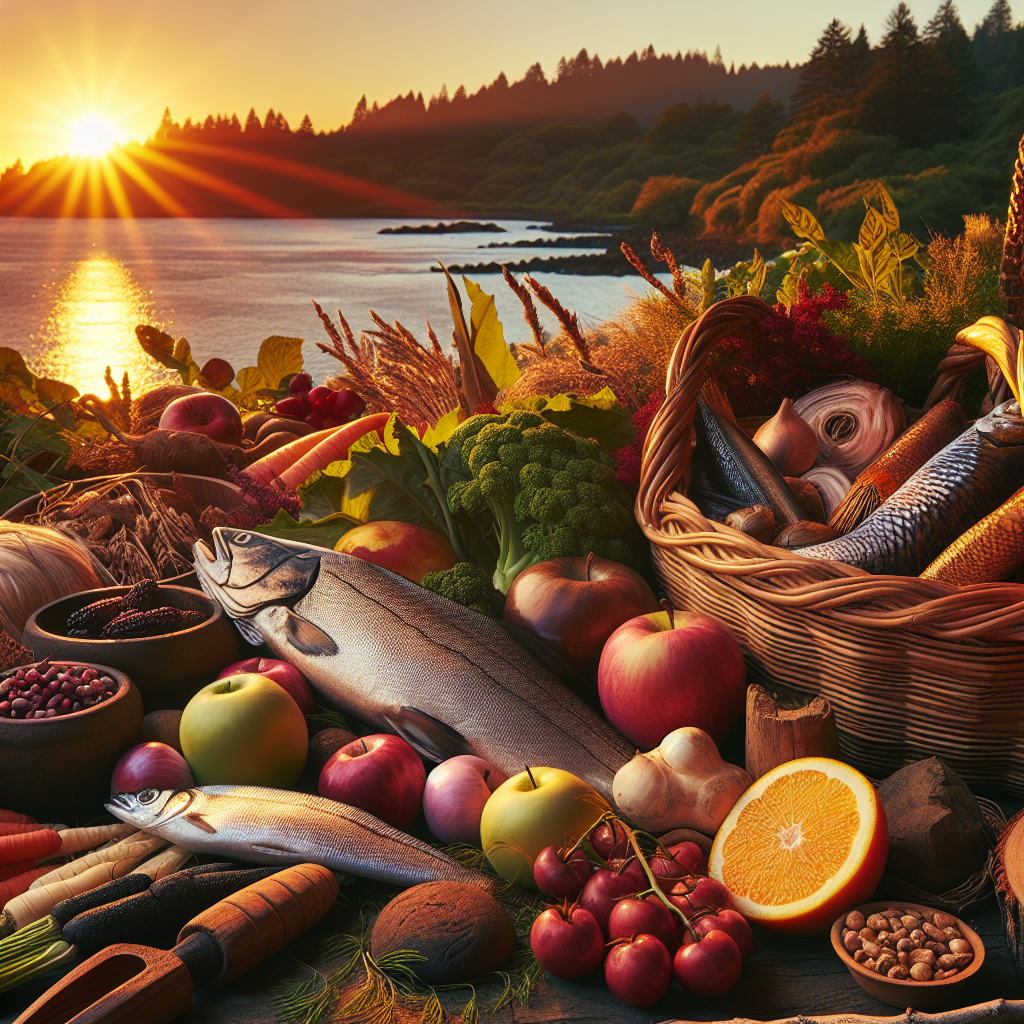A Mushroom Spotted in the Douglas Fir Forest: A Taste of Oregon’s Indigenous Food Heritage
If you’ve ever dipped your toes in the wild, chilly Pacific waters while you look out onto Haystack Rock, or hiked along the wooded trails nestled within Multnomah County, then you surely have seen your fair share of Oregon’s unique natural bounty. It isn’t just the stunning landscapes that capture our hearts, but also the oceans, forests, rivers, and mountains that offer a bounty of traditional indigenous foods that have nourished the Native American tribes of Oregon for generations.
In our sun-soaked summers and misty winter mornings, these foods have been an irreplaceable part of local diet, cultural expression, and community building. To experience Oregon without tasting its indigenous foods is like a summer without the thrill of a Powell’s Books sale – unthinkable and just not right.
Indigenous Foods that Prefer the Rain-drenched Oregon Soil
Consider the tribal nations that once thrived across Oregon, from the Umpqua of the south to the Nez Perce of the northeast, their food heritage showcases the versatility of the region’s flora and fauna. Underneath the lush canopy of our state’s iconic Douglas Fir trees, the tribes would have hunted mule deer, elk and grouse, while streams and rivers offered thriving communities of salmon, trout and shellfish.

Familiarize yourself with locally sourced elk served up at Timberline Lodge or sample the smoked salmon at Fisherman’s Market down in Eugene and you’ll get a glimpse of traditional indigenous meals. Keep in mind though Mother Nature is the real chef here in Oregon, with simple, natural ingredients that need little more than open flame and a pinch of salt.
If you roam the wilder corners of our state, Crater Lake National Park or Deschutes National Forest, you’ll find a landscape rich with camas bulbs. These starchy bulbs were traditionally baked in earthen pits and enjoyed by the tribes as a delicious, portable food source. Today, you might find these repurposed in modern recipes in local farmer’s markets and artisanal food fairs as mashes, soups or stews.
Acorns, Berries and Wild Root Vegetables: Natures fruit and veggie stand!
Oregon has always gifted a local, seasonal ‘fruit and veg’ offering that’d rival any Kroger grocery aisle. A walk along the Rogue River or the Willamette Valley, especially during berry season, is filled with promises of huckleberries, salal berries, and elderberries perfect to make into traditional pies and jams.
Not to forget, local acorns, collected from Oregon white oak trees (yet another one of our state’s natural treasures) were traditionally processed and ground into a flour by many tribes. The next time you try an artisanal bread from Grand Central Bakery – look out for a rustic acorn bread and sample this native delight.
A Love for Foraging: How about a Wild Spring Onion from Mount Hood?
Here in Oregon, foraging isn’t just a hip trend for foodie Instagram feeds, it is rooted deeply in local traditions. Each spring, the snow-capped peak of Mount Hood hides treasures like wild spring onions, ramps and fern heads that grace the tables of our aware and inspired chefs at places like Paley’s Place or Farm Spirit. Fall brings with it a carpet of chanterelle, morel and truffle mushrooms which offer an earthy delight on local menus.
Wrapping Up The Indigenous Food Trail
Dedicated Oregonians won’t need to rely on pictures when they hear of these indigenous delights, because they’ve likely seen it, touched it, and tasted it while living in rhythm with the state’s vibrant seasons. But even for transplants or weekend travellers eager to taste and appreciate Oregon from a deeper perspective, know that the beaver state is not shy with its culinary heritage. It unravels itself each season, on a coastal rock, a forest trail, a valley or a mountain peak.
But don’t take this for granted, remember that we are guests in a long, storied banquet laid out by the Native American tribes, who found the richest of menus in every Oregon creek, ridge, forest, and estuary. Locals and visitors alike have a responsibility to honor and preserve this space while also relishing the feast that Oregon has always provided.
Living in Oregon isn’t just about big scenic landscapes, it’s also a wonderful journey of flavors, textures and traditions that reflect the land and its people. The next time you’re hiking along the Columbia River or fishing in Umpqua River, remember the ancient tribes that stood there before us and take a moment to appreciate the abundant Oregon nature pantry that surrounds us. We’re so lucky, aren’t we, folks?
